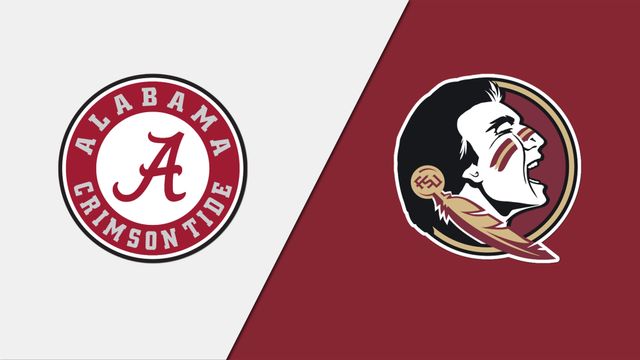As the Chicago temperatures drop and we travel further into the holiday season, all that’s on everybody’s minds are candy canes, Christmas trees, and lots and lots of Christmas cookies. But how did we all come to the conclusion that these things are even associated with the holiday season? Did somebody just have a random idea and it stuck? Did someone uncover a truth or find a deeper meaning? Maybe yes, maybe no, but, either way, I’m here to give you all the history behind the biggest traditions associated with the holiday season, including “Why are red and green so significant to Christmas?” “Why do we decorate for Christmas?” “How did Santa Claus get added into the equation?” and “Where did reindeer and snowmen come from?”
Red and Green
“Everything starts from a Coca-Cola ad.” This is true in many areas, but in particular it is true when it comes to the iconic red and green Christmas colors. It all started in 1931 when Coca-Cola hired illustrator Haddon Sundblom to create a “jolly, bearded Santa Claus in a red suit for their magazine ads. The image of Santa in a red suit became the basis for our modern interpretation of the character,” said Rebecca Noris in her article about the two famous Christmas colors. People believe that since red and green are opposites on the color wheel, and red was already set as Santa’s color that red and green would contrast each other nicely. Along with Coca-Cola setting the image for Santa, many Christians believe the traditional red and green colors were inspired by the life of Jesus. Green represents the eternal life of Jesus Christ, just as evergreen trees remain green the whole winter long. Adding onto that, red represents the blood shed by Jesus during his crucifixion. Although there are many reasons why these two colors are our main focus at the end of the year, they complement each other nicely, and it’s difficult to imagine Christmas with any other colors.
Christmas Trees & Decorations

Moving on to the decoration department, starting in October, stores begin putting out Christmas decorations—and it seems to start earlier and earlier every year. But why do people decorate for Christmas in the first place? Well, there are many different reasons, and surprisingly, they’re all quite different from each other.
1. Religious Symbolism
The first reason Christmas decorations are so significant is the religious aspect, which is how many of these traditions began. During the holiday season, people often put up lights on their trees and light candles around the house to create that festive atmosphere. Both the candles and lights symbolize Jesus as the light of the world, guiding people and “lighting up” their paths through darkness. Additionally, bells represent the birth of Jesus Christ, while stockings symbolize acts of service for others. Although giving presents is a common tradition, stockings carry an added meaning in gift-giving. They demonstrate an extra level of thoughtfulness and care, showing how much someone means to you through a small but meaningful gesture.
2. Feast of Adam and Eve
Although this was not the original tradition, during the Middle Ages, people celebrated the Feast of Adam and Eve by decorating something called a “Paradise Tree.” This tree was decorated with apples, wafers, tinsel, gingerbread, and other sweets to represent the forbidden fruit, the Eucharist, and the tree in the Garden of Eden.
3. Martin Luther
Martin Luther, a German theologian and religious reformer who wrote the 95 Theses, the New Testament in German, and the Articles of Schwabach, is also credited with popularizing the tradition of decorating a Christmas tree and adding lights to it. During the Christmas season, Martin Luther was said to have brought a small fir tree into his home and decorated it with candles to represent the star that led the wise men to Jesus. He further explained to his children that the green tree during winter symbolized their faith in Christ, as mentioned earlier.

4. The Germans
While all these reasons may seem significant and reasonable, most believe that the origin of Christmas decorations can be traced back to the Germans. They are credited with creating many of the decorations we use today, such as Christmas tree forms, nutcrackers, advent wreaths, and glass-blown ornaments. In the 1800s, Hans Greiner began making glass Christmas ornaments called baubles in Germany. These were the first manufactured Christmas ornaments, and they became a huge commercial success.
Reindeer and Snowmen

First, let’s start with reindeer. You may all think of Rudolph the Red-Nosed Reindeer and assume that’s where it began. But that story doesn’t really explain how reindeer became associated with Christmas in the first place. The biggest evidence for this comes from a poem written in 1823 by Clement C. Moore, titled A Visit from St. Nicholas, also known as ‘Twas the Night Before Christmas. This poem is considered the origin story for the eight main reindeer we all know today. It includes the lines, “But a miniature sleigh, and eight tiny reindeer,…And he whistled, and shouted, and called them by name; ‘Now, Dasher! now, Dancer! now, Prancer and Vixen! On, Comet! on, Cupid! on, Donner and Blitzen!’” These are the eight reindeer as you know them today.
Cold to the touch, warm to the heart! Snowmen have many origin stories, ranging from art to emotion. So, why did people start making snowmen? Though now they are used for entertainment during winter, in the Middle Ages, they were considered a form of art.

1. Coping and Hope
In places where the winter was extremely harsh and cold, snow would fall in large amounts. To deal with these harsh weather conditions, people would build snowmen to get them through the winter and also as a sign of hope for the winter to pass and for spring to come along!
2. Raise Morale
Snowmen were also built to raise people’s morale. This goes along with reason number one, but during times of strife, people would build snowmen. For example, in 1511 the people of Brussels built over 100 snowmen as part of a public art show to raise spirits during times of freezing temperatures.
3. Creating Scenes
Though some people are still dedicated to making snowmen, during the middle ages, people used to spend hours creating snow scenes, some political, some not. But usually these snowmen scenarios were either unrecognizable, had a deeper meaning, or were politically charged.

Though everyone has fun in the snow now, people used to take what we think of as a silly activity very seriously. And that’s what makes this part of Christmas history so beautiful. People would use what the earth had given them to speak their minds and convey messages during dark and sad times.
Santa Claus
Finally, we come to the main focal point of the Christmas tradition: Santa Claus. Where did the idea of Santa Claus come from? It all started in the 4th century, tracing back to a Christian bishop named— you guessed it—Saint Nicholas. He was known for giving gifts in secret, particularly to children. When you put it all together, this gives us the modern-day Santa Claus we know today. St. Nicholas’s fame spread throughout medieval Europe after his relics were “rescued” from Myra and taken to Italy in 1087. Over time, tales of his gift-giving exploits gave rise to the tradition of leaving presents for children on the night before 6 December, which is St. Nicholas’s Day.
Today
Through years and years of Christmas history, changing and evolving, we’ve arrived at winter 2024, where everyone’s idea of Christmas is different and unique to their own preferences and beliefs. And that’s what makes Christmas so special—everyone can have their own interpretation of the traditions, decorations, and celebrations (no matter how they originated).
Merry Christmas, Happy Hanukkah, Season’s Greetings, Feliz Navidad, and happy holidays. However and whatever you say, I hope you enjoyed learning more about the most wonderful time of the year. Merry Christmas to all, and to all a goodnight!
Works Cited:
- Lee, A.(2021, December, 12). How Father Christmas Found his Reindeer. History Today. https://historytoday.com/archive/natural-histories/how-father-christmas-found-his-reindeer#:~:text=On%2023%20December%201823%2C%20the,Steady%2C%20and%20Feckless%20and%20Speckless.
- Bentz, C.(2024, November, 24). The History of the Snowman: A Holiday Tradition. https://thanksgivingpoint.org/blog-the-history-of-the-snowman-a-holiday-tradition/#:~:text=of%20the%20Snowman-,Snowmen%20have%20been%20around%20for%20centuries%2C%20dating%20back%20to%20the,and%20movies%20around%20the%20world.
- Close, J.((2019, December, 11). A Brief History of the Snowman. Oxford Open Learning.
- https://www.ool.co.uk/blog/a-history-of-the-snowman/#:~:text=Snowmen%20continue%20to%20crop%20up,of%20inspiring%20acts%20of%20resistance.
- Gabriel, A.(2022, January, 10). Before ‘Frosty’: The origin story of the modern snowman. Fox Weather. https://www.foxweather.com/lifestyle/before-frosty-the-origin-story-of-the-modern-snowman#:~:text=Although%20building%20a%20snowman%20has,like%20great%20artists%20like%20Michelangelo.%22
- Loud, N.(2020, December, 22). The History of Christmas Decorations in America. The Saturday Evening Post.
- https://www.saturdayeveningpost.com/2020/12/the-history-of-christmas-decorations-in-america/#:~:text=The%20story%20of%20Christmas%20decorations,the%2018th%20and%2019th%20centuries.




















